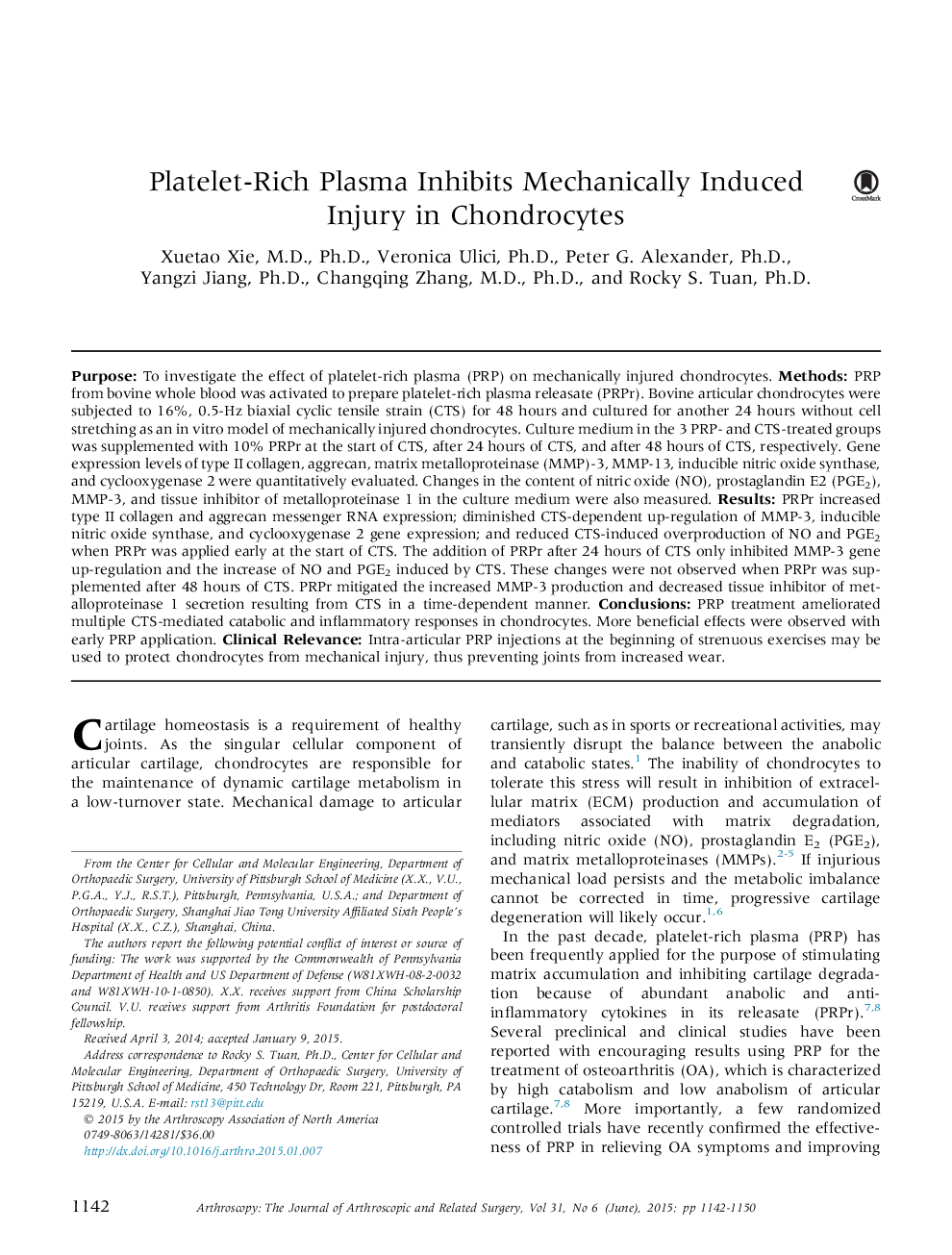| Article ID | Journal | Published Year | Pages | File Type |
|---|---|---|---|---|
| 4042094 | Arthroscopy: The Journal of Arthroscopic & Related Surgery | 2015 | 9 Pages |
PurposeTo investigate the effect of platelet-rich plasma (PRP) on mechanically injured chondrocytes.MethodsPRP from bovine whole blood was activated to prepare platelet-rich plasma releasate (PRPr). Bovine articular chondrocytes were subjected to 16%, 0.5-Hz biaxial cyclic tensile strain (CTS) for 48 hours and cultured for another 24 hours without cell stretching as an in vitro model of mechanically injured chondrocytes. Culture medium in the 3 PRP- and CTS-treated groups was supplemented with 10% PRPr at the start of CTS, after 24 hours of CTS, and after 48 hours of CTS, respectively. Gene expression levels of type II collagen, aggrecan, matrix metalloproteinase (MMP)-3, MMP-13, inducible nitric oxide synthase, and cyclooxygenase 2 were quantitatively evaluated. Changes in the content of nitric oxide (NO), prostaglandin E2 (PGE2), MMP-3, and tissue inhibitor of metalloproteinase 1 in the culture medium were also measured.ResultsPRPr increased type II collagen and aggrecan messenger RNA expression; diminished CTS-dependent up-regulation of MMP-3, inducible nitric oxide synthase, and cyclooxygenase 2 gene expression; and reduced CTS-induced overproduction of NO and PGE2 when PRPr was applied early at the start of CTS. The addition of PRPr after 24 hours of CTS only inhibited MMP-3 gene up-regulation and the increase of NO and PGE2 induced by CTS. These changes were not observed when PRPr was supplemented after 48 hours of CTS. PRPr mitigated the increased MMP-3 production and decreased tissue inhibitor of metalloproteinase 1 secretion resulting from CTS in a time-dependent manner.ConclusionsPRP treatment ameliorated multiple CTS-mediated catabolic and inflammatory responses in chondrocytes. More beneficial effects were observed with early PRP application.Clinical RelevanceIntra-articular PRP injections at the beginning of strenuous exercises may be used to protect chondrocytes from mechanical injury, thus preventing joints from increased wear.
